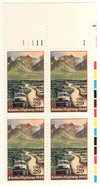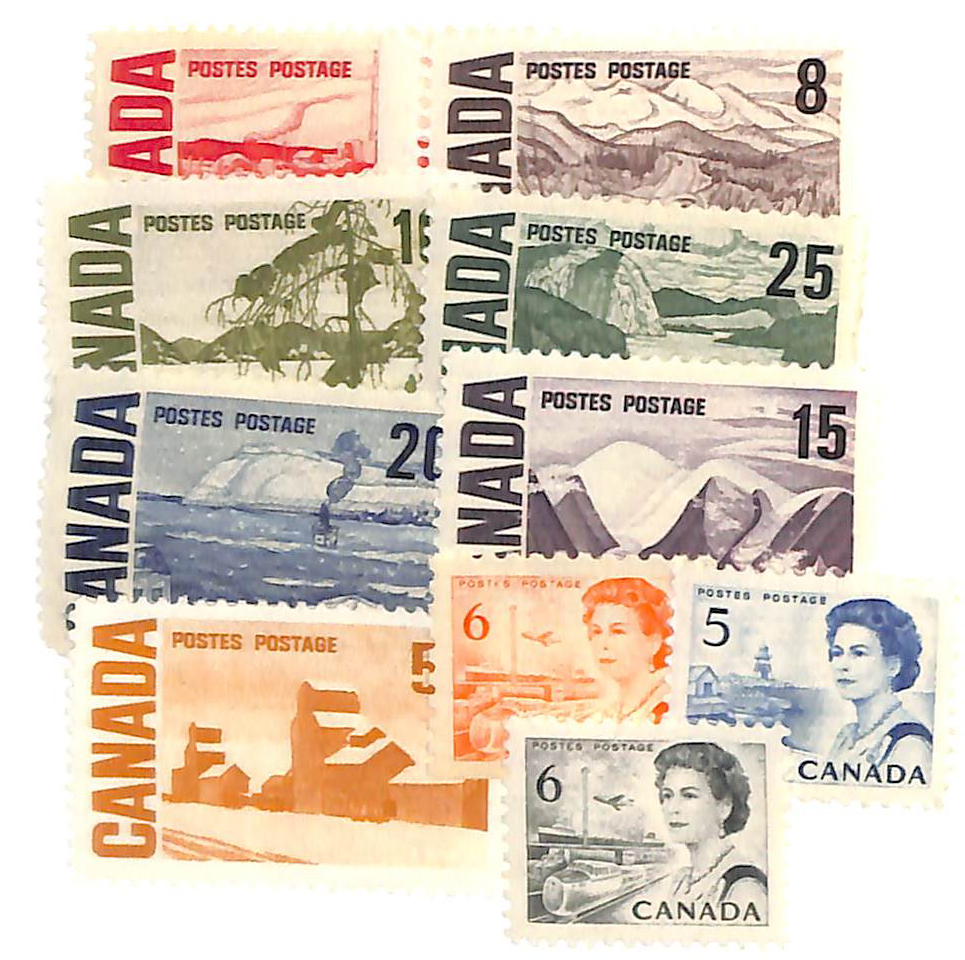
# 2635 PB - 1992 29c Alaska Highway
US #2635
1992 Alaska Highway
- Commemorates the 50th anniversary of the Alaska Highway
Category of Stamp: Commemorative
Value: 29¢, First Class Mail rate
First Day of Issue: May 30, 1992
First Day City: Fairbanks, Alaska
Quantity Issued: 146,610,000
Printed by: Bureau of Engraving and Printing
Printing Method/Format: Lithographed (plates of 200 subjects – 20 across, 10 down) and engraved (400 subjects – 20 across, 20 down). Separated into panes of 50 – 10 across, 5 down
Perforations: 11
Reason the stamp was issued: The stamp celebrates the 50th anniversary of the construction of the Alaska Highway, a 1,500-mile road built during World War II to connect military bases in Alaska with the continental US.
About the stamp design: The image for the stamp is based on a 1942 US Army photograph of a section of the Alaska Highway. The vehicle in the foreground is a Dodge quarter-ton truck, called a command car. The original photograph is in the Library of Congress.
Alaskan watercolor painter Byron Birdsall was chosen to produce the art for the Alaska Highway stamp. He based his artwork on the 1942 photo. Birdsall was not able to identify the mountain range in the background of the photo.
First Day City: The stamp dedication ceremony took place at the Alaskaland Civic Center in Fairbanks, Alaska. A World War II Army Dodge, like the one pictured on the stamp, was on display at the ceremony.
A second ceremony happened the next day in Delta Junction, where the highway officially ends. An official second-day-of-issue postmark was provided for the occasion.
Unusual thing about this stamp: An error of this stamp was found by a collector in Colorado. The black “29 USA” logo was missing from some of the stamps purchased from a vending machine. After noticing the error, the collector bought out the machine’s supply of stamps with the error.
History the stamp represents: The Alaska Highway was built by the Army Corps of Engineers in less than nine months. Running over 1,500 miles through Canada, it allowed vital supplies to travel from the continental US to military bases in Alaska Territory. The road was called the Alaska-Canada Military Highway, or Alcan Highway for short. During World War II, Imperial Japan captured some of the Aleutian Islands of Alaska, threatening to attack mainland America. American forces were able to stop Japan’s advance and remove them from Alaska, thanks in large part to the Alaska Highway.
The Alaska Highway
In the 1920s, people began proposing a highway from the lower 48 states, through Canada, to Alaska. The Canadian government refused to offer funds for its construction because it would have benefited only the small population of the country's Yukon Territory. Support increased in both Canada and the US toward the end of the decade, but the Great Depression hit and there was no money for such a program.
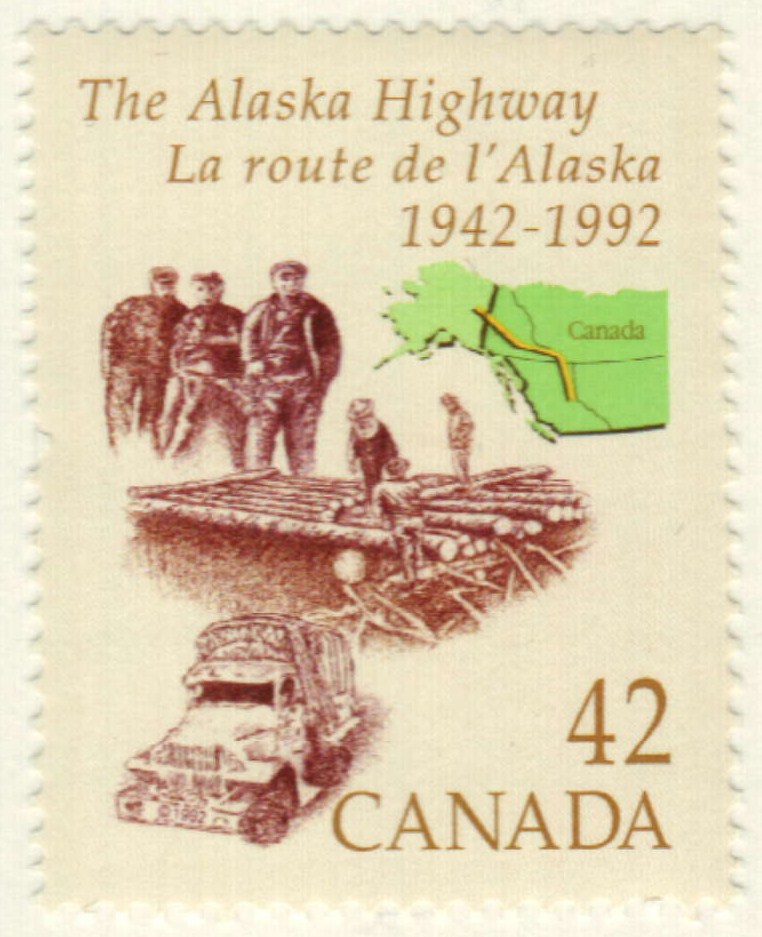
When war came to the Pacific Ocean, US President Franklin Roosevelt once again proposed the highway to Canada as a defense against Japanese aggression on North America. Full support came when the Japanese attacked the American naval base at Pearl Harbor, then captured two of the Aleutian Islands off Alaska's coast. The Canadians agreed to allow construction on the condition the portion going through that country would be turned over six months after the war.
Construction began in March 1942 after the equipment and workers had traveled by train to Dawson Creek, British Columbia. After the spring thaw, crews began working from both ends, planning to meet in the middle. The US Army Corps of Engineers was assigned more than 10,000 men to build the road. Completing the road in less than nine months is considered one of the greatest feats in US engineering history. The road was officially completed on October 28, 1942.
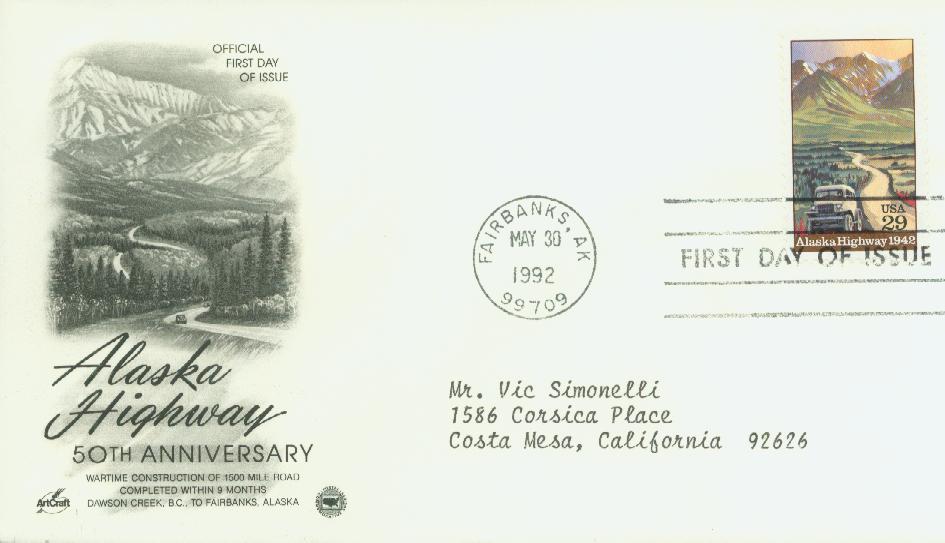
The highway was dedicated on November 20, 1942, and went into use in 1942. The Alaska-Canadian Military Highway, later the Alcan Highway and eventually just the Alaska Highway, became an important supply route for the bases and airfields in the US territory of Alaska during the war.

When the war ended, the Canadian part of the road was turned over to that country as agreed. It became part of the Northwest Highway System. Because the highway was built specifically for the military, some portions were not acceptable for civilian travel. Over time, winding sections and mountain switchbacks were rerouted and the path was changed to bypass residential areas. In the more than 75 years since construction was initially completed on the highway, it has been shortened by over 300 miles. Modern measurements put its length at 1,397 miles.
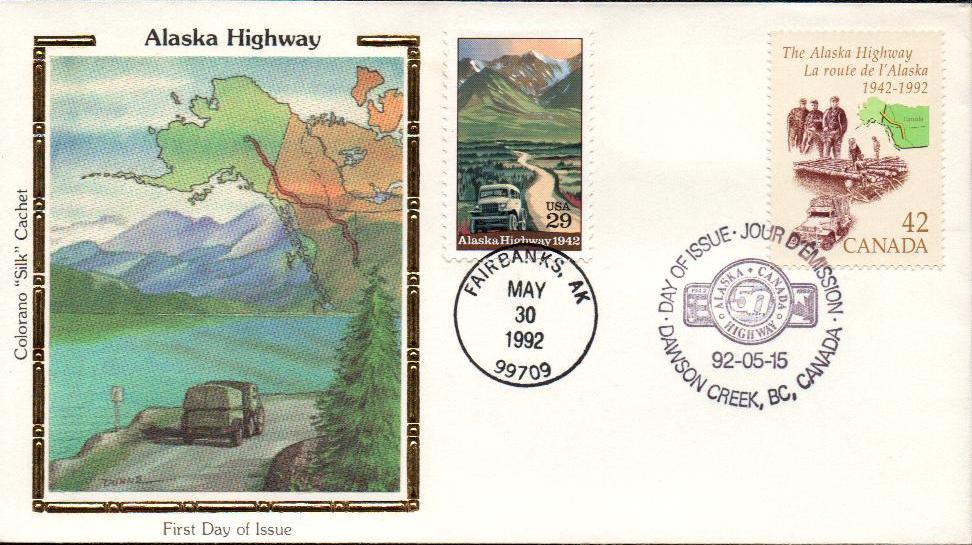
Early on, mileposts were placed along the extensive highway. Because of the changes made in the route, many of the markers are not accurate, but because of tradition, they remain. In fact, one British Columbia town is named for its milepost location. Wonowon, pronounced "one-oh-one," is at mile 101 on the highway.
US #2635
1992 Alaska Highway
- Commemorates the 50th anniversary of the Alaska Highway
Category of Stamp: Commemorative
Value: 29¢, First Class Mail rate
First Day of Issue: May 30, 1992
First Day City: Fairbanks, Alaska
Quantity Issued: 146,610,000
Printed by: Bureau of Engraving and Printing
Printing Method/Format: Lithographed (plates of 200 subjects – 20 across, 10 down) and engraved (400 subjects – 20 across, 20 down). Separated into panes of 50 – 10 across, 5 down
Perforations: 11
Reason the stamp was issued: The stamp celebrates the 50th anniversary of the construction of the Alaska Highway, a 1,500-mile road built during World War II to connect military bases in Alaska with the continental US.
About the stamp design: The image for the stamp is based on a 1942 US Army photograph of a section of the Alaska Highway. The vehicle in the foreground is a Dodge quarter-ton truck, called a command car. The original photograph is in the Library of Congress.
Alaskan watercolor painter Byron Birdsall was chosen to produce the art for the Alaska Highway stamp. He based his artwork on the 1942 photo. Birdsall was not able to identify the mountain range in the background of the photo.
First Day City: The stamp dedication ceremony took place at the Alaskaland Civic Center in Fairbanks, Alaska. A World War II Army Dodge, like the one pictured on the stamp, was on display at the ceremony.
A second ceremony happened the next day in Delta Junction, where the highway officially ends. An official second-day-of-issue postmark was provided for the occasion.
Unusual thing about this stamp: An error of this stamp was found by a collector in Colorado. The black “29 USA” logo was missing from some of the stamps purchased from a vending machine. After noticing the error, the collector bought out the machine’s supply of stamps with the error.
History the stamp represents: The Alaska Highway was built by the Army Corps of Engineers in less than nine months. Running over 1,500 miles through Canada, it allowed vital supplies to travel from the continental US to military bases in Alaska Territory. The road was called the Alaska-Canada Military Highway, or Alcan Highway for short. During World War II, Imperial Japan captured some of the Aleutian Islands of Alaska, threatening to attack mainland America. American forces were able to stop Japan’s advance and remove them from Alaska, thanks in large part to the Alaska Highway.
The Alaska Highway
In the 1920s, people began proposing a highway from the lower 48 states, through Canada, to Alaska. The Canadian government refused to offer funds for its construction because it would have benefited only the small population of the country's Yukon Territory. Support increased in both Canada and the US toward the end of the decade, but the Great Depression hit and there was no money for such a program.

When war came to the Pacific Ocean, US President Franklin Roosevelt once again proposed the highway to Canada as a defense against Japanese aggression on North America. Full support came when the Japanese attacked the American naval base at Pearl Harbor, then captured two of the Aleutian Islands off Alaska's coast. The Canadians agreed to allow construction on the condition the portion going through that country would be turned over six months after the war.
Construction began in March 1942 after the equipment and workers had traveled by train to Dawson Creek, British Columbia. After the spring thaw, crews began working from both ends, planning to meet in the middle. The US Army Corps of Engineers was assigned more than 10,000 men to build the road. Completing the road in less than nine months is considered one of the greatest feats in US engineering history. The road was officially completed on October 28, 1942.

The highway was dedicated on November 20, 1942, and went into use in 1942. The Alaska-Canadian Military Highway, later the Alcan Highway and eventually just the Alaska Highway, became an important supply route for the bases and airfields in the US territory of Alaska during the war.

When the war ended, the Canadian part of the road was turned over to that country as agreed. It became part of the Northwest Highway System. Because the highway was built specifically for the military, some portions were not acceptable for civilian travel. Over time, winding sections and mountain switchbacks were rerouted and the path was changed to bypass residential areas. In the more than 75 years since construction was initially completed on the highway, it has been shortened by over 300 miles. Modern measurements put its length at 1,397 miles.

Early on, mileposts were placed along the extensive highway. Because of the changes made in the route, many of the markers are not accurate, but because of tradition, they remain. In fact, one British Columbia town is named for its milepost location. Wonowon, pronounced "one-oh-one," is at mile 101 on the highway.



